KS: Welcome Radko! I feel honored to introduce one of the leading agrohomeopaths to the subscribers of the Hpathy ezine. Can you tell us first a little more about your cosmopolitan nature ?
RT: I was practically born in a greenhouse, in a family of biologists, forest engineers and teachers. Music and nature are my great passions and characterized my life until I discovered homeopathy. I left the old Czechoslovakia with emigration documents 25 years ago. Mexico is now my second homeland.
It was a tremendous change to arrive in another country without speaking Spanish. The first job interviews were written like a script on paper for me and I made them by phone. Most difficult to get accustomed with was probably the market economy. Time went by, and now I’m giving lectures about how to conduct negotiations and I also edit papers written in Spanish.
KS: That sounds like a big jump from one world to another ! But you did not leave your passion for plants behind you. You started experimenting with plants already in 1978. Can you tell us more about your first plant experiments and how you came to include homeopathy in your experiments?
RT: I made my first experiments when I was 18 years old. We were asked to suggest research projects and I chose to investigate the relation between electrical reactions of plants and Pavlov’s conditioned reflex. I looked for a physician who could provide me clandestine access to the only ECG equipment in my hometown.
We connected the plants, which I had brought in a flowerpot and hidden in a handbag, so that the guard in the hospital entrance could not see them. Once the research was done I sent the results to the psychotronic laboratory of Prof. Dr. Frantisek Kahuda at the University Carolina in Prague. He really enjoyed my investigations and wrote immediately that I had to come to work with him in his psychotronic laboratory.
At the same time I took part in an admission examination at the Musical Academy in Brno, which I won. I had to choose then between music composition and microbiology and plants. I chose music and graduated as classical music composer. But when I came to at the National University of Mexico as university lecturer, I got ill with amebiasis, a frequently occurring disease in foreigners in Mexico.
The allopathic physician prescribed antibiotics, but the fever did not decrease. My state of health declined rapidly until the uncle of my first wife, a homeopathic physician and teacher at the Advanced School of Homeopathy, came to visit me. He threw away the antibiotics and gave me homeopathic globules, where upon the disease disappeared rapidly.
Years later I accidentally put some Phosphorus 200CH on an orange tree and its reaction was amazing: The tree filled with blossoms ! I thought “I’m getting crazy ! Or did I not observe the reaction of the tree well”? As proof I started to make photographs and applied homeopathic remedies to other plants.
This was the beginning of my fantastic journey to Agrohomeopathy. Contacts with colleagues from all over the world, studying and Hahnemannian provings with plants, all helped me to deepen and systematize my knowledge. I wrote my first agrohomeopathic manual in Spanish and edited the book Homeopatia para las Plantas.
KS: Yes, I’ve read your books. They are a tremendous contribution to an understanding of this new field of homeopathy. One of the most interesting chapters in your new book is about miasms in plants. Could you tell us a little about this fascinating yet so controversial subject ?
RT: Miasms are the most fascinating topic in agrohomeopathy for me, but they are probably the least comprehended topic of Hahnemann’s teachings and completely unknown in agriculture. They have a logical representation and are not controversial in the plant world. They are and will be the key for the future survival of plants as well as humans.
The topic of miasms in plants arises principally because of the durability of certain diseases and the impossibility of curing them. The palliative treatment by allopathic agronomists and the indiscriminate use of agrotoxic substances have triggered the flare up of the miasmatic state in plants and soil.
The miasm is a predisposition to certain diseases. It is related to viruses and bacteria, but also to other, little studied organisms like mycoplasma. Psora is characterized by inhibition, loss of function and hypersensibility. Sycosis is expressed by dilatation and weakening of tissues, proliferative processes, prolapsus and induration.
Syphilis is characterized by complete destruction of plant tissues and inhibition of the secondary metabolism. The three Hahnemannian miasms remain the miasms, but pathogenic organisms are different in plants and will evolve and change eventually due to the actions of man like transgenization, induced resistance and genetic modification by the application of allopathic medicines.
Although Hahnemann never experimented with plants, Boenninghausen did and provided the basis for further investigations made by Kolisko. Eugeny and Lili Kolisko applied homeopathic remedies to seeds and plants in a revolutionary way, but their focus was merely allopathic. Their observations were limited to the reactions without considering the Laws of Similars and miasmatic expression of plant and soil.
Currently many woods are dying in the world due to the climatic changes, or without explanation, and allopathic forestry engineers fail to offer a possible cure. This happens precisely because of the failure to comprehend miasms in the plant world.
KS: Have you already investigated plant diseases to find out which of their infectious diseases leave life-long sufferings?
RT: I haven’t identified one particular bacteria or virus yet which could be assigned to cause a particular miasm in plants. Agrobacterium tumefaciens could possibly come into question as a cause of sycosis, because it is one of the oldest bacteria and can cause mutations in tissues in the form of balls, but there are also others.
It is easier to identify a human pathogen with a particular miasm because we speak about a single genus (humans), whereas we observe and treat a great number of different classes, orders, families and genera in the plant world which are susceptible to a variety of different pathogens.
KS: You mentioned the forest die-back worldwide. Here in Europe it were the Ashes, in Australia the Eucalypts. Have you had success in Mexico with Agrohomeopathy?
RT: The problems are similar on the whole planet: A low defense response of trees and increased susceptibility to even more virulent pathogenic organisms, fueled by climatic changes, the increase of ozone on the ground, contamination and thoughtless actions of man.
Only names and species change, but the principle is the same. I have proposed the application of homeopathic remedies directly on the land of the woods in the reserve of the Sierra Gorda in Mexico. The project is planned for a duration of three years and is based on observations and experiments made with trees. It is the first time that a scientific study of such an extent will be conducted, four areas each of the size of one hectare.
KS: I’ll keep my fingers crossed, the success of this project would be of great benefit for the wood as well as homeopathy! Besides homeopathy, we do share another passion, music and playing piano. Do you see similarities between music and homeopathy?
RT: Music is an open system and its significance depends on the interrelation between performer and listener. It cannot be studied as an isolated system without interrelation to its environment. The same applies to plants. It is not possible to understand them without the inclusion of soil, air, and other plants and organisms which are part of their vital constellation, as well as humans.
KS: I agree, and there are many other analogies. Just as the conductor maintains the orchestra’s performance in harmony the vital force maintains the sensations and activities of the whole organism in harmony, in the state of health. Homeopathy too is based on rhythm, the carrier of intention and information, and cures deeply if the remedy gets in synch with the rhythm of the patient.
With music it is the audible vibration that creates a field and affects our own personal rhythm in every aspect. As Socrates said, “harmony and rhythm of naturally structured music find their way into the deepest depths of the soul and unfold its natural beauty and dignity.” Was there anything in music that did inspire your homeopathic research?
RT: Rhythm is the timing of notes that are played and is the most important element in music. Instead of just varying pitches, composers can also vary rhythms, which creates the uniqueness of each piece. Meter in music is how we hear the groupings of beats, that is, the organization of beats in repeating accent patterns, forming a “pulse-group” of stressed and unstressed beats.
In analogy to music I have made some experiments modifying the grouping of succussions during the process of potentization. This process, which I call “structured potentization”, implicates differently acting remedies. But as of yet I did not systematize this knowledge.
KS: This is indeed an interesting field of investigation. Potencies and succussions have kept Hahnemann and other homeopath occupied for many years. I’m really curious to know your findings! Back to your second home country. You teach Agrohomeopathy extensively in Mexico. How do farmers perceive the courses and results of homeopathic treatment?
RT: Meanwhile I have educated more than a half thousand farmers and researchers in my courses. They use and apply my agrohomeopathic knowledge but I also learn from them. In this sense Agrohomeopathy constantly gains new followers, and the number of researchers, who notice the appearance of a new functioning discipline and wish to learn, also increases.
But farmers have three advantages compared to their university colleagues from the office: They don’t have prejudices, they know to observe nature with patience and have done so for many years. They also have the urgent and pragmatic need to solve their problems and don’t care whether there is a theory behind the solution.
Researchers have many prejudices due to prevalent theories in mainstream science. They dedicate little time to the observation of nature in its holistic dimension, and they don’t have the direct and urgent need to solve a problem. They primarily want to gain their salaries in institutions by means of publications, lectures and administrative tasks.
KS: You are a very passionate homeopath, investigating each ill tree or plant in your environment. Surely the primeval forests in South America offer a high potential of curative remedies. Do you also experiment with new remedies? Do the commonly known polychrests have the same widespread use for plants?
RT: In general, there is no need to look for exotic remedies from the other side of the world. Their own surroundings offers a large quantity of new medicines. They react satisfying to new impulses and modifications of the environment and behavior of different living organisms. I work with some remedies made from native resources whose homeopathic action in the plant world is comparable to polychrests.
For instance, the Mexican plant Larrea tridentata and the fungi Ganoderma applanatum and Ganoderma lucidum. These are not known to be polychrests for humans. Humans share about 50% of the genetic code with plants, that’s why we share a good part of the polychrests, but not all.
There were other organisms before the existence of higher plants which lived together in close association (symbiosis), like algae and fungi. Algae and fungi belong to the family of cryptogamous plants, which have no true flowers and produce no seeds. Higher plants are phanerogam, i.e. they have flowers and produce seeds.
These higher, phanerogamous plants evolved from algae of freshwater marshes. That’s why the plant root of higher plants are very closely related to algae and fungi evolutionarily. The aerial part represents an evolutionary jump as more advanced parts are present, like seeds and specialized organs like stomata, which control gas exchange and are a key element in the evolution of advanced terrestrial plants.
That’s the reason why fungi and plants which combat them, have a special place among the polychrests for plants. Let’s not forget that animals and the humans themselves evolved from plants. But the human is a “plant” specie who lost the permanent contact with the soil in their evolution.
KS: Which main problems to you face in Agrohomeopathy?
RT: The public and user is focused on infallible recipes and easy prescriptions for all kinds of plant diseases. But knowing that practically each type of plant might need a different remedy due to its individual reaction, we are confronted with a high degree of complexity.
Biopreparations for example, are very important remedies in Agrohomeopathy as we often find the adequate remedy for the recovery of the soil, plant and other parts within the same vital constellation. But also in Agrohomeopathy, nothing substitutes a detailed case anamnesis and the correct repertorization of the entire vital constellation and symptom picture. The key for successful prescribing is to adhere to Hahnemann’s doctrine and its requirement to match the totality of symptoms of the plant with the remedy.
I have dedicated a lot of time to the study of the individuality of plants, soil and seeds, the biotypologies of plants and the pathogenesis which accompanies their different states of health. To define biotypologies and to create a list of constitutional remedies will enable agrohomeopaths to orient themselves more easily with the large list of symptoms and agrohomeopathic remedies.
KS: Teachers and students of the Comenius Institute, whose founder and dean you are, were involved in a terrific project for the reforestation of the top soil in Iturbide. The idea and its realization is magnificent and I hope readers will feel inspired to imitate this project to save the woods worldwide. Please tell us more about this project.
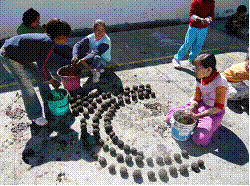
RT: In this project for the reforestation of the Sierra de Madre in Iturbide, we use the method of balls created by Masanobu Fukuoka. It consists in forming balls of earth, clay, excrements from cows and black earth. Inside each ball is put a seed of a native holm oak (Quercus sp.), treated with homeopathy.
The balls were dried in the sun and dispersed on the land. The clay protects the seed from dehydration and natural enemies. Once the rain comes they grind off and the tree emerges without the necessity of greenhouses or transplants. It is a funny and cheap technique, applicable in each climatic condition.
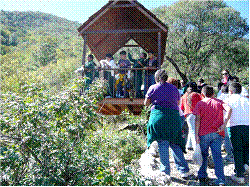
In the last picture you can see parts of fog capturers, frames of 8 meter high, with huge meshes. The technology permits condensing of the water of the clouds to moisten the land. In combination with the Fukuoka balls it works like wonders!
KS: That’s really a valuable contribution for the preservation of nature. Do you have a vision for the future ?
RT: The near future will bring us new surprises. The opportunities to live on will get worse and agriculture, as performed usually cannot be continued, as the resources are almost exhausted. Ninety percent of agrotoxicals, fertilizers and other agricultural inputs are made of petrol which is nearly exhausted.
Genetically modified organisms accelerate mutations of micro- and macro-organisms and endanger the survival of humans. Henri Bergson writes in his book “Creative Evolution” (L’évolution créatrice) that the organisms which will survive in the inexorable course of time are not those which have defenses in the form of most resistant shells, but those which are able to mutate and move rapidly. The challenge for humans will be to learn rapidly in view of the fast coming changes.
KS: Thank you for this most interesting interview. I hope that Agrohomeopathy will gain more and more followers and contribute to homeopathy’s prosperity. I hope your books can soon be read in English and wish you all the best for your future work!
Radko Tichavsky can be contacted at:
Instituto Comenius
Direccion Administrativa:
Ave. Eugenio Garza Sada No. 427 Sur
Pabellon Tec Piso 1, Local 20
Colonia Altavista
C.P. 64840
Monterrey, N.L. MEXICO
Tels: +52 (81) 8369-1650
Katja Schütt, Germany
Editor Hpathy

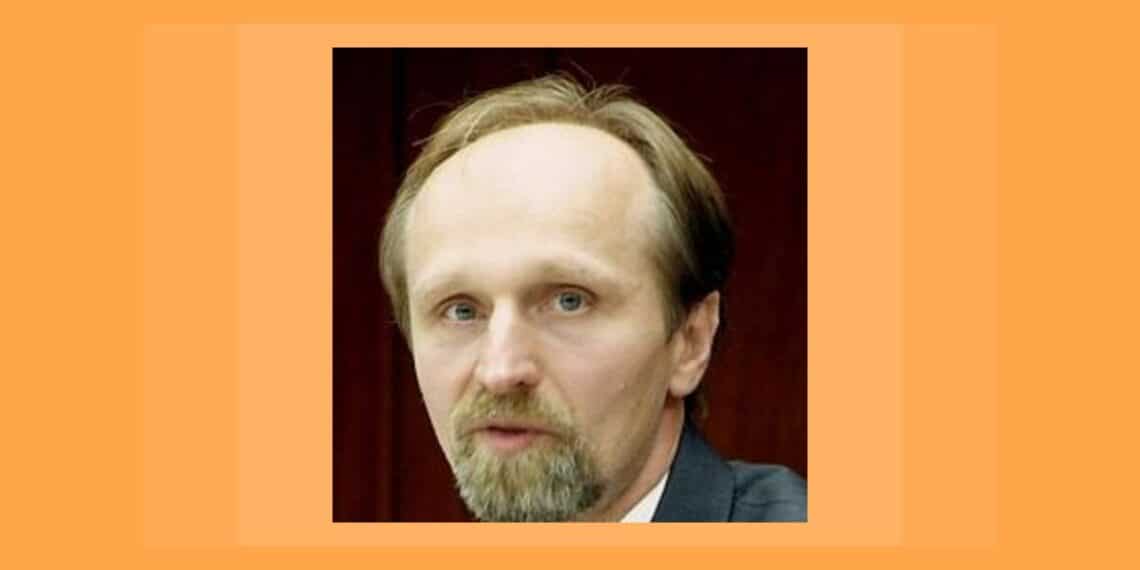
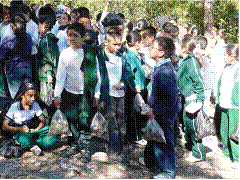
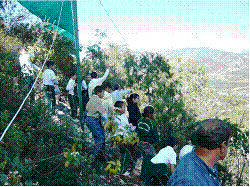
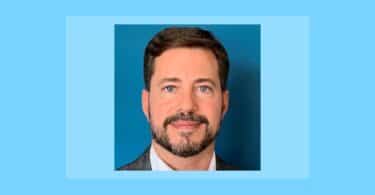
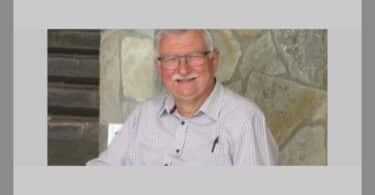
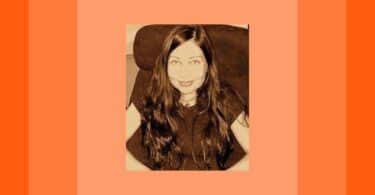
If there are particular items you want to share with your group, you can post the link to them. (Cutting and pasting them would create a copyright problem)